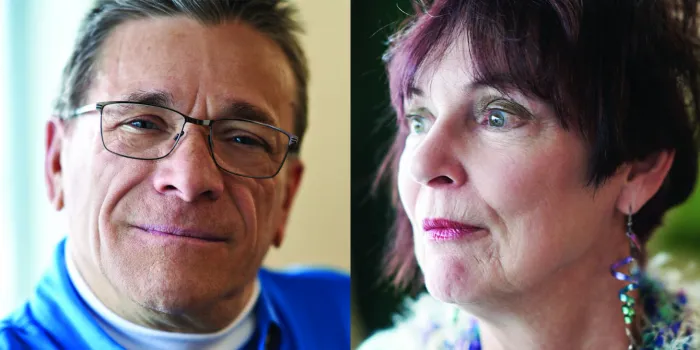Michael Tuberdyck: I found out I had hepatitis C sometime in the 1990s, which I contracted years before from tainted blood products. It’s a problem that many of us baby boomers with hemophilia have. Interferon was the first line of treatment for hep C at the time, and it caused months of all sorts of unpleasant side effects like dry mouth, exhaustion, headache and even mood changes. Luckily I was in pretty good health overall, and I endured the side effects as best I could.
Because we knew that hep C put me at a higher risk for liver cancer, my treatment center doctor did a scan every year. In 2014, the scan found something. I was diagnosed with liver cancer. Doctors at Roswell Park Comprehensive Cancer Center here in Buffalo treated it successfully with microwave ablation, which uses heat generated by microwave energy to destroy the tumors.
Unfortunately, new tumors showed up two years later. Immediately, doctors at Roswell treated me with targeted chemotherapy. At that point, my doctors recommended a liver transplant because they suspected that even if they successfully killed the tumors again, they’d come back. I was able to get on the transplant list at the University of Pittsburgh Medical Center (UPMC). That’s when my wife, Marilyn, sprang into action.
Marilyn Tuberdyck: I contacted as many news outlets as I could in order to get the word out that we were looking for a living donor. The transplant coordinator at UPMC encouraged us to look for a living donor because surgery can be scheduled instead of being done on an emergency basis. It can also shorten the time on the waiting list by months or even years.
A living donor just donates a small part of his or her liver, which will then regenerate. The small portion donated to the transplant patient will grow into full size. I asked everyone to mark their driver’s licenses as organ donors.
Michael: While we searched for a donor, doctors kept track of recurring tiny tumors in my liver. I was told that if the tumors spread outside the liver, I could no longer get a transplant and the cancer would be terminal. We had a few family members who were willing to donate, but unfortunately for various reasons none of them worked out. Finally, after a year on the transplant waiting list, on March 12, 2018, we got a call that there was a donor liver available from an accident victim. We made the four-hour drive from Buffalo to Pittsburgh, and I had a successful surgery. I was in UPMC for 30 days, and was able to come home at the end of April.
Because factor VIII is produced in the liver, it’s thought, although never guaranteed, that a liver transplant would increase factor level. This was the case in my situation. I had less than a 1% clotting factor in my system since birth. Now I’m at a healthy 50% factor level.
Marilyn: I’m continuing the mission to bring awareness to organ donation. I believe that registering to be a donor is something people need to do to help the community. If we work together, it will make everyone better. Organ donation can give people a second chance at life. And in Mike’s case, we joke that Mike cured his hemophilia the hard way.
Michael: That certainly is the case in my life. Nearly two years after my transplant, I’m healthier than I’ve ever been. I take a tai chi class twice weekly, and exercise in a warm therapy pool twice a week.
I’ve gone from being a patient to being a volunteer at our local hemophilia center, Western New York BloodCare. I don’t infuse anymore, and I’m cancer-free.I feel very fortunate.

